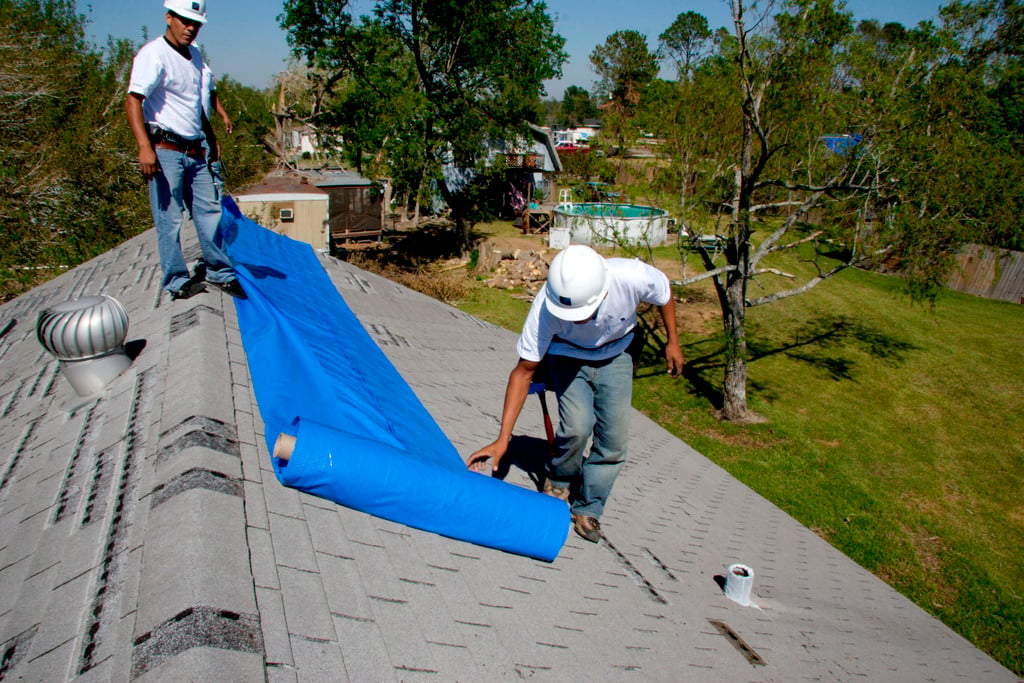
Image Source: Google
When a sudden storm damages your roof, it's essential to act quickly to prevent further harm to your home. While waiting for a professional roofer to arrive, you can take some steps to provide temporary cover and protection. This DIY emergency roof covering guide offers tips and tricks to help you make quick and effective repairs until a permanent solution can be implemented. Refer Link: https://totalcarerestoration.com/emergency-roof-tarping/
Assessing the Damage
Before you start repairing your roof, it's crucial to assess the extent of the damage. This will help you determine the best approach to take when covering the affected area. Here are some steps to follow:
Steps to Assess the Damage:
- Inspect the roof from a safe vantage point using binoculars.
- Look for missing or damaged shingles, leaks, or structural issues.
- Check the attic for signs of water damage or leaks.
- Document the damage with photos for insurance purposes.
Materials Needed for Temporary Roof Covering
Having the right materials on hand is crucial for creating a temporary roof covering. Here are some essential supplies you may need for the job:
Essential Materials:
- Tarps or waterproof plastic sheets
- Roofing cement or sealant
- Roofing nails or screws
- Hammer or screwdriver
- Ladder
- Protective gear such as gloves and goggles
Temporary Repair Techniques
Once you have assessed the damage and gathered the necessary materials, you can proceed with temporary roof repairs. Here are some effective techniques to cover and protect your roof in an emergency:
Temporary Repair Techniques:
- Secure a tarp over the damaged area using roofing nails or screws.
- Apply roofing cement or sealant around the edges of the tarp to prevent leaks.
- If shingles are missing, use spare shingles or metal flashing to cover the exposed area.
- Check for debris or branches on the roof and remove them to prevent further damage.
- Inspect gutters and downspouts for clogs and clear them to ensure proper drainage.
Additional Tips for Temporary Roof Covering
In addition to the basic techniques mentioned above, here are some extra tips and tricks to help you with your DIY emergency roof covering:
Additional Tips:
- Trim overhanging tree branches to prevent them from falling on the roof during a storm.
- Use a roof rake to safely remove excess snow buildup in winter.
- Consider installing a permanent roof underlayment for added protection in the future.
- Always prioritize safety when working on the roof, especially during adverse weather conditions.
- Monitor the temporary repairs regularly and reapply sealant or secure the tarp as needed.
By following these tips and techniques for DIY emergency roof covering, you can effectively protect your home from further damage until a professional roofer can assess and repair the roof. Remember to prioritize safety and take necessary precautions when working on your roof.

